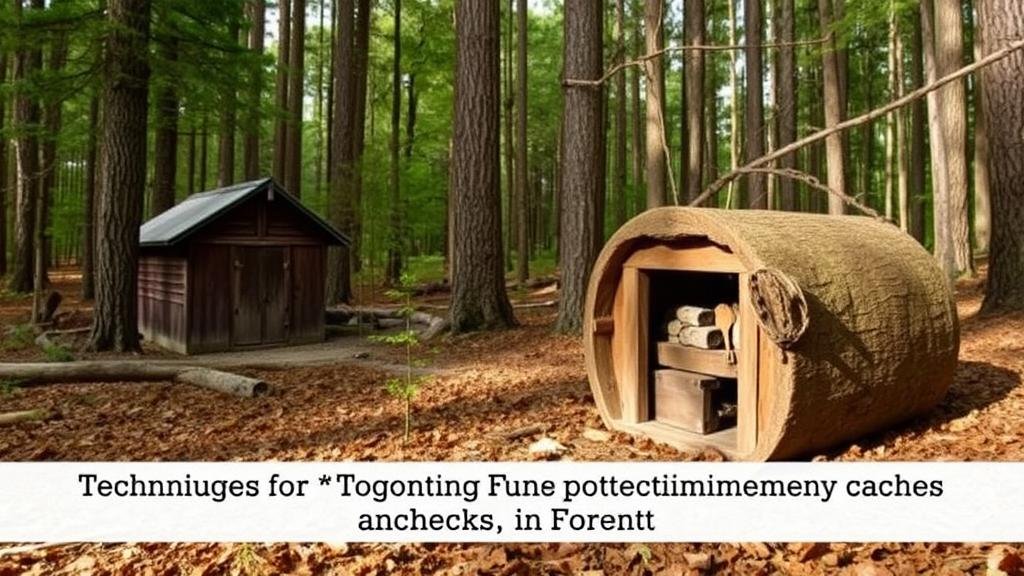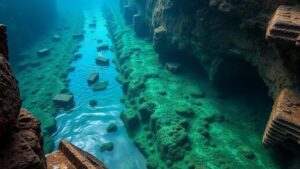Techniques for Locating Forgotten Pioneer Money Caches in Forests
Techniques for Locating Forgotten Pioneer Money Caches in Forests
The discovery of forgotten money caches in forests is a pursuit that has fascinated treasure hunters and historians alike. These hidden treasures, often buried by pioneers during westward expansion, can hold significant historical value and monetary worth. This article discusses various techniques for locating these elusive caches, providing a comprehensive overview of methods both historical and modern.
Understanding Historical Context
Before engaging in search techniques, it is essential to understand the historical context surrounding pioneer money caches. During the 18th and 19th centuries, many settlers traveling westward hid their savings, gold, or other valuables for safekeeping. Factors such as transient living conditions, financial instability, and the threat of theft led to the practice of hiding money. Some buried their caches or concealed them in natural features such as tree roots or rock formations.
Researching Historical Maps and Documents
One of the foundational techniques for locating pioneer money caches is thorough research using historical maps and documents. Maps from the time period can provide insight into the trails used by settlers and possible locations of campsites.
- Land Grant Records: These documents can indicate settlement patterns and land ownership, which might suggest where a pioneer might have hidden money.
- Old Trail Maps: Trails often served as routes for pioneers, and intersections or stops along these trails may reveal potential cache sites.
For example, the Sanborn Fire Insurance Maps, which detail urban areas during the pioneer days, can also provide clues about settlements and other human activities in the regions where caches might have been buried.
Using Metal Detectors
Metal detectors have revolutionized the search for buried treasures, including pioneer money caches. The technology detects metallic objects below the ground, making it an invaluable tool for treasure hunters. When using a metal detector, consider the following:
- Frequency Sensitivity: Choose a detector with adjustable sensitivity; lower frequencies are ideal for detecting larger items like coins.
- Ground Balance Settings: Adjustments for ground mineralization are crucial for reducing false signals.
In many instances, metal detectorists have unearthed coins from the 19th century in forests known for pioneer settlements. A notable case occurred in California, where a group of amateur treasure hunters recovered a significant cache of gold coins from a known campsite of 1849 gold rush migrants.
Geographical and Environmental Indicators
Understanding geographical features can significantly enhance the chances of finding a cache. Pioneers often chose natural landscapes that offered protection or concealment for hiding their valuables.
- Water Sources: Areas near rivers or streams were commonly frequented by pioneers and could indicate potential hiding spots.
- Dense Vegetation: Thick woods provided cover from potential thieves, making them ideal locations for burying valuables.
A historical analysis of pioneer behavior often shows a correlation between these environmental factors and the locations of buried riches. For example, a search near a waterfall or a prominent rock formation can yield insights into likely cache locations, as pioneers sought out natural landmarks.
Employing Dowsing Techniques
Dowsing is an ancient method that some believe can locate underground water, minerals, or even buried objects. Dowsers often use tools such as Y-shaped branches or metal rods to guide their search. While dowsing remains controversial, anecdotal evidence suggests that some treasure hunters have had success using these techniques in areas with known pioneer activity.
Importantly, dowsing should be approached with skepticism and used in conjunction with more empirical search methods. The psychological aspect of dowsing can sometimes lead treasure seekers to inadvertently lead themselves to the cache based on expectations rather than solid evidence.
Cooperative Efforts and Community Resources
Engaging with local historical societies, experienced metal detecting clubs, or online forums can provide crucial tips and information about past discoveries. Many amateur treasure hunters generously share their findings, leading to gatherings where experiences and knowledge can be exchanged.
- Local Historical Societies: These organizations often maintain archives of local history and may have records of reported cache finds.
- Online Treasure Hunting Forums: Websites and social media groups can be invaluable resources for connecting with others in the field.
Practicing Ethical Treasure Hunting
It is vital to remember that while the pursuit of treasure can be exciting, ethical considerations must guide the process. This includes obtaining necessary permits, respecting private property, and adhering to local laws regarding metal detecting and excavation. Also, documenting and reporting found artifacts can contribute to historical knowledge and preservation efforts.
Conclusion
Locating forgotten pioneer money caches in forests requires a blend of historical research, modern technology, and community involvement. By understanding the historical context, utilizing metal detectors, examining geographical indicators, trying dowsing, and collaborating with others, treasure hunters can enhance their chances of success. Ethical considerations should always be at the forefront of these efforts to ensure that the rich history surrounding these treasures is preserved for future generations.
As you embark on your treasure-hunting adventure, remember to approach each search with patience, and an open mind, and always be prepared for both discoveries and lessons learned along the way.



